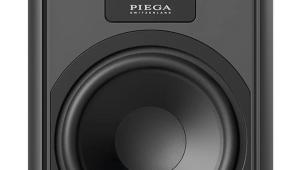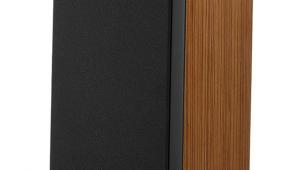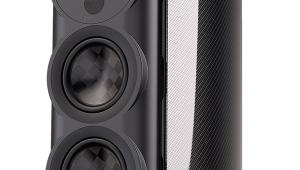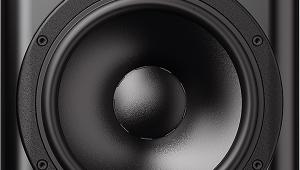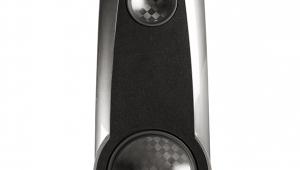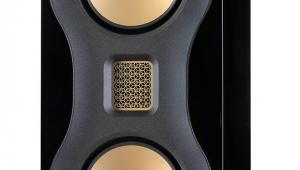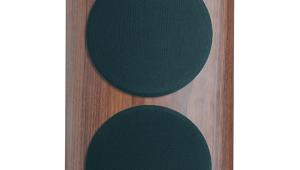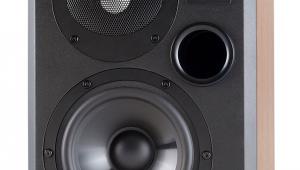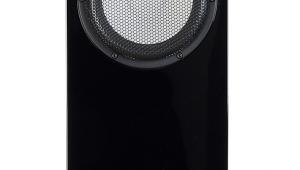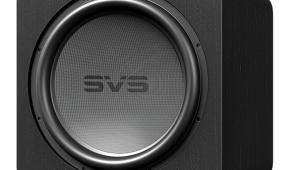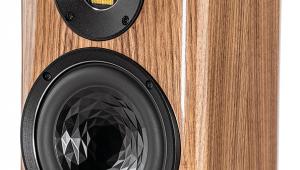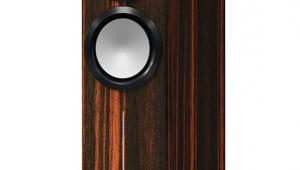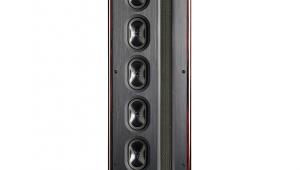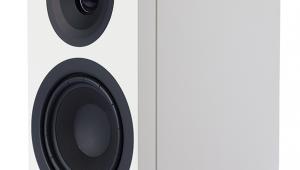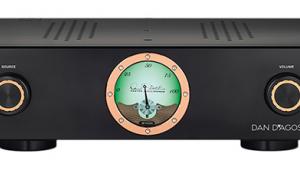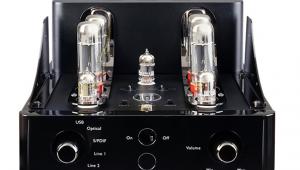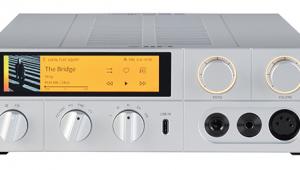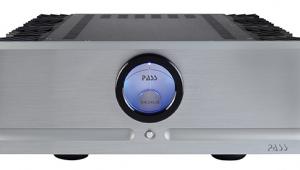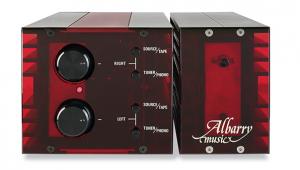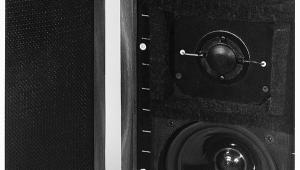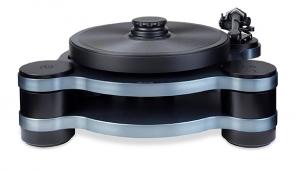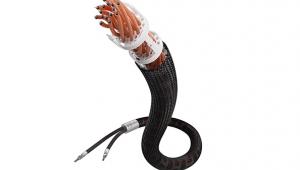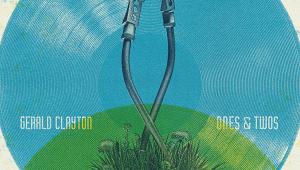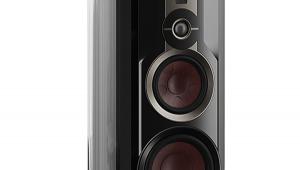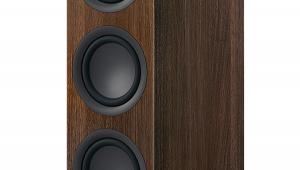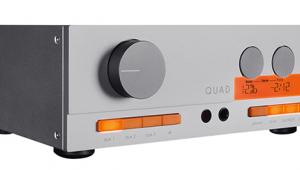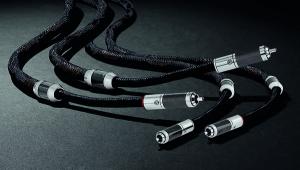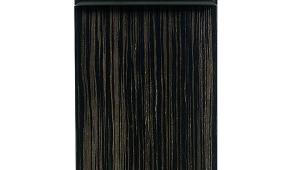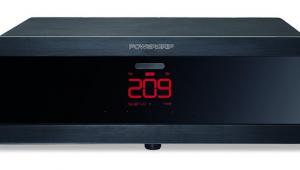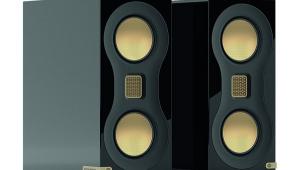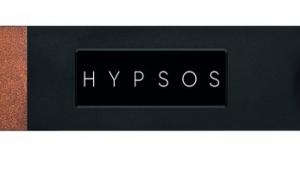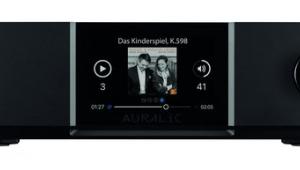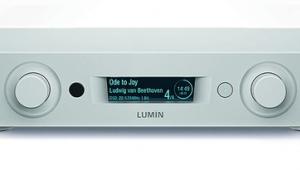Piega Coax 411 Gen2 loudspeaker
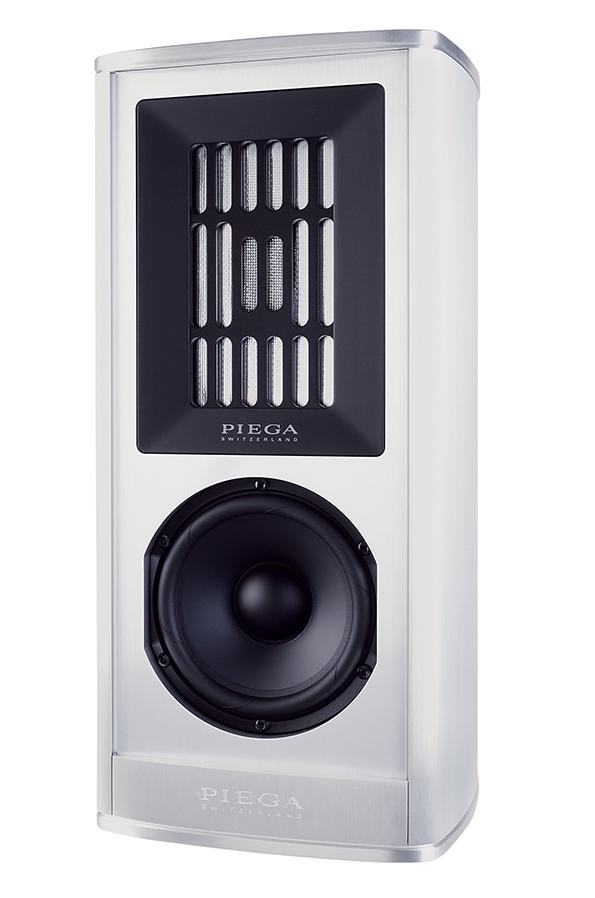

Instantly recognisable, Switzerland’s Piega has produced its ‘ribbon’ loudspeakers for nearly four decades. Building on the company founded by Leo Greiner (the other founder, Kurt Scheuch, brought technical chops to the table), it’s a manufacturer that takes pride in its family ownership. Greiner’s sons Alex and Manuel still manage the business from Horgen on the shores of Lake Zurich, where production is situated.
Leaving the dedicated Center 211 Gen2 aside, the three-way Coax 411 Gen2 standmount, from £7900, is the smallest speaker in the range, with the Coax 611 Gen2 and Coax 811 Gen2 offered as floorstanding alternatives. In all instances, the two crucial words are ‘Coax’ and ‘Gen2’, the first referring to the speakers’ proprietary coaxial design, which features a ribbon tweeter mounted within a surrounding midrange ribbon.
The next generation
Ribbons have been part and parcel of the Piega story from the start, with the brand employing coaxial ribbon systems since the C-2 in 2002. However, along with almost every driver called a ‘ribbon’ these days, they are actually something different [see boxout]. ‘Gen2’, on the other hand, accurately reflects this being a second generation of the Coax range first introduced in 2017, which in turn replaced Piega’s long running C models. And to some extent the Gen2 label downplays the importance of the improvements introduced, for this is no mere refresh. Next to new drivers (more on these later), the volume and weight (another 10kg) has increased for this ‘Gen2’ model over its predecessor.
The elegant shape and excellent build quality of the Coax 411 Gen2 won’t come as a surprise to Piega watchers. The Swiss company embraces flowing lines and the use of aluminium to create sleek loudspeakers that buck the boxy orthodoxy, and it’s an aesthetic that’s been honed over the years. Looking at the more affordable Premium and Ace ranges (both available in passive and active guises), the same cues are easily detected. The person responsible is Stephan Hürlemann, an award-winning Swiss designer and architect who has collaborated with Piega since its Premium Gen2 range was debuted in 2018.
The colour options at hand strengthen the Coax 411’s modern feel, even though to my mind the preferred finish is the ‘classic’ silver-brushed aluminium pictured here. Other options include a black or white anodising with a lacquered coating, the second of those for £8100, plus eight new ‘Coax Excellence’ finishes introduced by Piega in 2024. You’ll pay £9300 for these, choosing from the likes of Autumn Bronze, Bordeaux Red and Blue Lagoon.
Out of the box the speakers’ grilles are pressed into the rebated baffle and mounted flush with the cabinet. Removing them requires the use of a bundled, high-power magnet, plus a deal of patience as the wire mesh is teased away from its snug fitting. Only then are the 160mm UHQD woofer, developed in conjunction with Norway’s SEAS, and bespoke C112+ coaxial ‘ribbon’ drivers revealed.
Brace for impact
The Coax 411 Gen2 is a standmount speaker, and a hefty one at that, clocking in at 25kg. However, the sides of the cabinet sweep around, quite sharply, towards the back so they appear very slender if viewed from the rear. They’re also a bit taller than expected for a unit with a small footprint (21cm wide and 31cm deep), so be sure to partner them with stands that offer rock-solid stability.
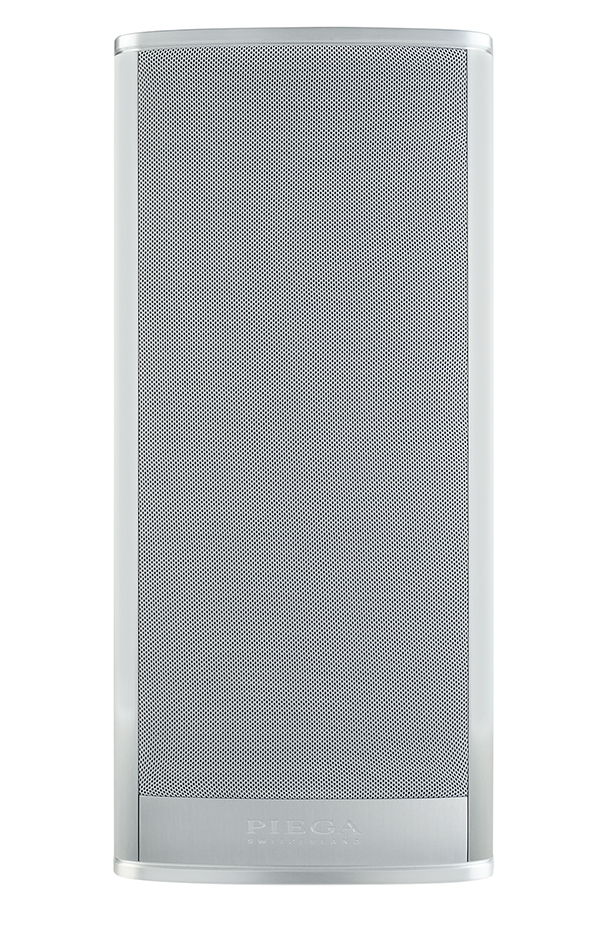
The disarming heftiness of these compact cabinets is entirely due to their construction – a combination of an extruded aluminium shell with further bracing inside. What Piega describes as its ‘Tension Improve Module 2’, or TIM2 for short, is a series of machined alloy ‘shelves’ forced into the cabinet shell under pressure to keep the walls under a controlled tension. This is intended to better manage standing waves within the cabinet and is one of the ‘Gen2’ improvements. Any remaining resonances – which the manufacturer says are at ‘micro’ level – are then dealt with by viscoelastic damping foils.
The move to a new ‘ribbon’ system, the C112+, is another key upgrade. As with previous coaxial designs from Piega, this features a large aluminium (midrange) membrane with a smaller decoupled tweeter membrane placed in the middle. Similar to more traditional coaxial tweeter and bass/mid cone implementations, the idea is to offer a ‘point source’ performance. The difference here is that the ultralight membranes (with the tweeter playing up to a claimed 50kHz) promise a precise, ‘fast’ portrayal of mid- and high frequency detail.
 Power up!
Power up!Taking heed of PM’s Lab Report [see here] and noting a real-life sensitivity that’s a lot lower than the stated 90dB, I hooked up the Piega standmounts to my Primare PRE35/A35.8 amplifiers – opting for the bridged mode that we know will deliver 340W/8ohm [HFN May ’22]. The Coax 411 Gen2’s split crossover also allows for bi-amping (as does the A35.8 amp with its four bridged channels), so I made the most of this facility for my listening.
From experience, Piega’s loudspeakers typically steer clear of tonal embellishment, and that’s the case with the Coax 411 Gen2s. There were no overt treble highs or dominating basses rearing their heads here, resulting in an even-handed and balanced representation of the music that’s soothing to listen to over lengthy sessions. At the same time, the signature tweeter added a noticeable airiness to the performance, ensuring these standmounts were a more fascinating listen than a cursory glance at their size and specifications might suggest.
Let My People Go [Archie Ball ARCH2101; 88kHz/24-bit] is an impressive meeting of both minds and jazz talent, with 83-year-old Archie Shepp showcasing his saxophone virtuosity alongside Jason Moran on the piano. As the title suggests, it also carries a politely presented political statement, which is not surprising considering Shepp’s history within the Civil Rights movement. Through the Coax 411s it was a poignant rather than rousing listen, with the sometimes angular, sharp saxophone tones rounded off just slightly by the coaxial driver.
Texture and technique
A strength of these standmounts is that while their voicing is well suited to relaxed, background entertainment, they’re equally at home with more ‘critical’ listening. In the case of the latter, and the album’s opening track, ‘Sometimes I Feel Like A Motherless Child’, there was an ambience present which successfully conjured an impression of the Philharmonie de Paris venue in which it was recorded in 2017. Especially so, I might add, with the presentation of Shepp’s sax playing, which revealed a lot of texture and technique.
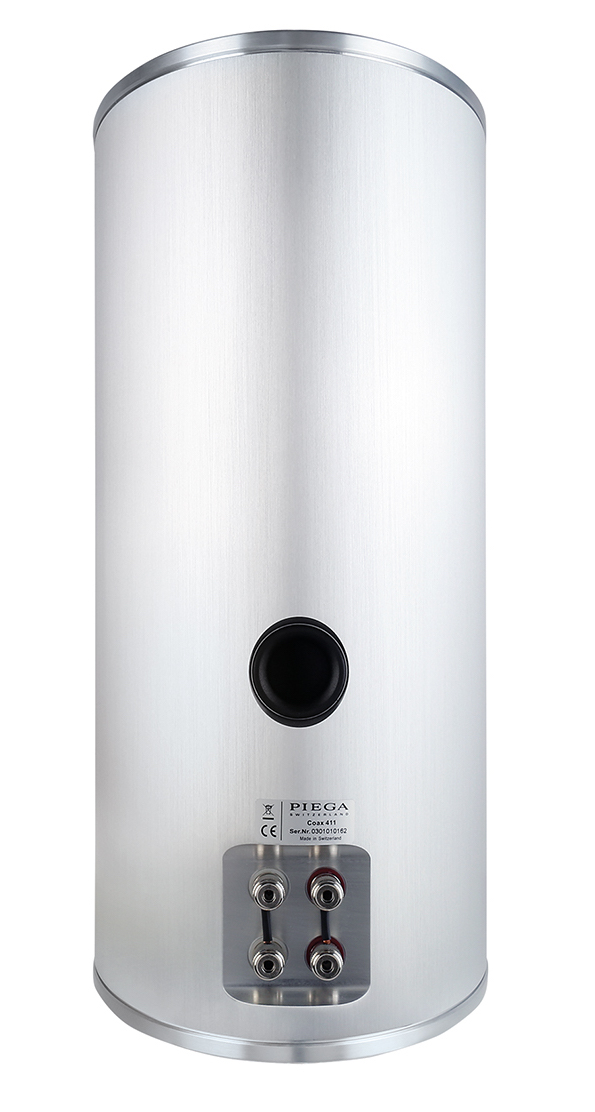
The classic Fritz Reiner version of Dvorák’s ‘Symphony No.9 in E minor’, performed by the Chicago Symphony Orchestra [Sony Music 88765414972-19], is music on a grander scale. It’s also lost little of its impact despite the recording dating from 1957, and the Coax 411 Gen2s did a great job of placing the whole orchestra on a broad soundstage, digging into the horns and timpani, and conveying the size and drama of the presentation. After getting off to a subdued, dreamy start, the Adagio – Allegro molto of the first movement quickly turns up the heat, and Piega’s speakers seemed to relish the dynamic cut and thrust of the piece.
Change Of Pace
The London Symphony Orchestra/Valery Gergiev recording of Prokofiev’s Romeo & Juliet [LSO Live LSO0682; 96kHz/24-bit] is more contemporary, appearing on Super Audio CD in 2010. Opting for the digital file versions and played via Roon into the Primare preamp, it made for a change of pace after Dvorák’s energetic symphony, ushering the Coax 411 Gen2s toward showing off their more delicate side with the jaunty strings of ‘The Street Awakens’. That said, the impressive (and controlled) bass extension achieved by these 160mm woofers, and port tuning, ensured the theatrical pesante theme of the ‘Dance Of The Knights’ thundered out appropriately. This is one of those classical pieces often used in film/TV productions to add instant spectacle, and the performance of the Coax 411 Gen2s made it easy to appreciate why.
Struck By Sax
Listening across Prokofiev’s ballet, the chameleonic nature of Piega’s speaker was apparent, as capable with the horn-infused set pieces as it was with the clarinets and bassoons during two intermezzos. And while the Coax 411 Gen2 doesn’t appear ultra-revealing at first, there was more than one moment when I was struck by the presence of an instrument I hadn’t always paid much attention to before, such as a tenor saxophone briefly making an appearance near the end of ‘The Dance Of Knights’.
A Good Deal
Nobody Loves You More [4AD 4AD0733LP] is the first solo LP from Kim Deal, surprising considering the number of releases the erstwhile bass player of The Pixies, and singer/guitarist of The Breeders, turns up on. It’s also one of the last productions of engineer Steve Albini, and sounds a lot more lavish than the ‘noise rock’ albums he was often involved with. The Coax 411 Gen2s proved a fine choice for the mélange of styles and instruments on offer, providing a full-bodied beat for the denser electropop of ‘Crystal Breath’ but not lacking in definition or scale with the more symphonic ‘Summerland’, where it effortlessly teased out the strummed ukulele.
Consuming this free-ranging rock album on vinyl, via a Pro-Ject X2 B turntable [HFN Sep ’22] with an MC9 cartridge [HFN Jul ’24], plus the new Musical Fidelity M8x Vinyl phono preamplifier [review in HFN Mar ’25], it became clear to me that the balanced approach of these speakers is what makes them so versatile – and so effective at letting me just sit back and enjoy wherever my mood took me...
Hi-Fi News Verdict
Provide the Coax 411 Gen2 with a worthy power plant, and these Swiss-built standmounts will reward you with an accurate and balanced portrayal underpinned by a foundation of controlled bass. It’s a great combination of qualities, making for a speaker that can play practically anything, and still get you tapping your feet. They’re an epitome of style too, managing to be understated and luxurious at the same time.
Sound Quality: 86%
